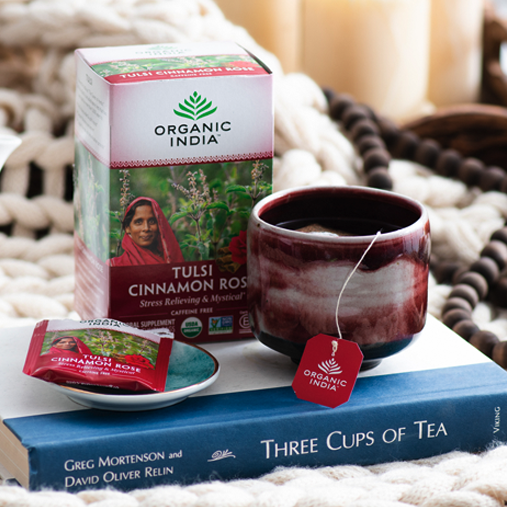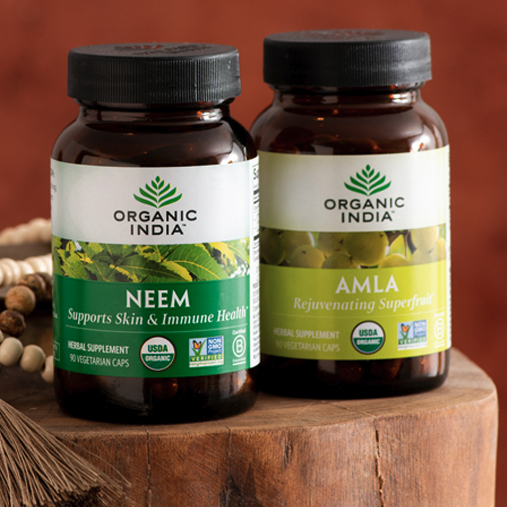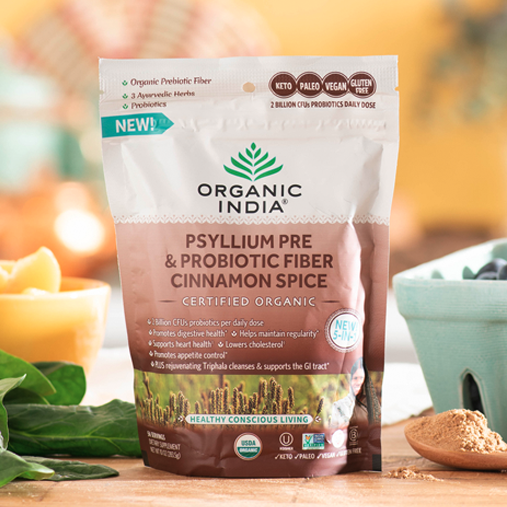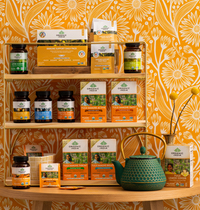Back
All About Indian Lilac: History, Benefits, Uses, & More
01/13/2025 | Written by Kristen Boye
Herbal Secrets

Indian Lilac is an ancient and revered Ayurvedic herb used in various wellness, beauty, and oral care products.
Also known as “the wish-fulfilling tree,” “village dispensary,” and “reliever of sickness,” Indian Lilac has a wide variety of traditional topical and internal applications that support nearly all aspects of well-being.
Here, we explore the exotic world of this herb and how to use it to promote immune function, oral health, healthy skin and hair, and more.
Indian Lilac vs Neem
Before we go on, we want to clear up any confusion about Indian Lilac versus Neem.
They are exactly the same plant!
Like many herbs, Indian Lilac is known by various names, depending on the region, including neem, Azadirachta indica, nim tree, and others.
The name “Indian Lilac” comes from the light purple flowers that bloom on the tree, resembling lilacs.
So, if you see “Indian Lilac” on a label, now you know it’s just another name for Neem.

What is Indian Lilac Used for?
Few plants are as cherished, revered, and recommended in Ayurveda and other systems of wellness as Indian Lilac, aka Neem.
Known in some cultures as “the village dispensary,” it is one of the few plants (technically a tree) whose parts—leaves, berries, seeds, bark, roots, flowers, etc.—all have health benefits.
Therefore, Neem has a vast history of traditional uses.
Indian Lilac in Ayurveda
The Indian Lilac tree is believed to have divine origins, having dripped from heaven to earth to impart its wisdom and healing.
In Hindu mythology, planting neem trees ensures one’s entry to heaven, and the tree is related to Dhanmantri, the Aryan god of health.
Here, we share an Ayurvedic perspective of the prized herb based on taste, physical properties, Doshas, and traditional uses.
Indian Lilac’s taste is bitter and astringent, and its physical characteristics are considered cool, light, and dry.
It’s typically used to balance Pitta and Kapha doshas and is considered too cooling and drying for Vata (although individual circumstances vary).
Indian Lilac may be recommended alone or with other traditional Ayurvedic herbs and lifestyle practices to support various aspects of health, including:
- Appetite
- Blood health
- Immunity
- Metabolic function
- Skin health
- Scalp health
- Oral health
- Eye health
- Digestive fire
- Wound healing
- And more
It’s also used as a natural fungicide and pesticide to help control pests and fungus on crops and as a contraceptive (it is contraindicated during pregnancy).
Its twigs are also used as toothbrushes in primitive parts of India and South Asia, which gives a literal illustration of its well-known benefits for oral health.
Other traditional uses are as a plant of protection and purification, an addition to herbal bridal baths, and it is also laid in the beds of newborn babies to help protect them physically and spiritually.
It may be used internally as a capsule, tea, powder, or oil or mixed with ghee or honey. Depending on the need and preparation, it can also be used topically as an oil, powder, or poultice or orally as a pack, oil, mouthwash, chew, or toothpaste.
As its name suggests, Neem is indeed a plant of many uses in Ayurveda and other neighboring systems of wellness.

Lilac vs Indian Lilac
Most Westerners are familiar with various ornamental lilacs, a type of tree with highly fragrant lavender, blue, white, and sometimes orange blossoms.
These belong to the genus Syringa.
Indian Lilac belongs to the genus Azadirachta, which is different from Syringa lilacs.
Benefits of Indian Lilac (Neem)
As discussed previously, Indian Lilac is used extensively in Ayurveda for dozens of health-related purposes.
Various research studies have also begun to confirm the traditional uses and benefits of Indian Lilac.
The following are examples of some studied benefits: [Sources: 1, 2, 3]
- It helps clear up the skin
- May support blood sugar balance
- It may help clear up minor rashes
- It may help with dandruff
- Supports healthy teeth and gums
- It may exhibit antioxidant properties
- Promotes normal immune function
- It may help regulate/modulate immune function
Although more research is needed to understand the properties and mechanisms of Indian Lilac fully, emerging studies have begun to validate many of its traditional uses.

Contraindications of Indian Lilac
Indian Lilac may have numerous benefits, but it’s not appropriate for everyone.
Its history as a contraceptive and evidence suggesting an abortive effect make it contraindicated during pregnancy. There is not enough evidence supporting its safe use during lactation.
It is also contraindicated for people with heart problems or highly elevated Vata in Ayurveda.
Use of Neem in children is generally not recommended.
Always talk to your doctor or healthcare practitioner before taking Neem, especially if you have heart, autoimmune, or blood sugar problems.
How to Use
There are many ways to reap the benefits of this beneficial herb at home.
Neem capsules, such as Organic India’s Neem, are a convenient way to get more Neem into your daily routine.
Various Ayurvedic oral care products containing Neem, such as toothpaste, mouthwashes, and dental floss, are also available. These are often combined with other Ayurvedic oral care staples, such as mineral-rich salts and other herbs.
You can also save money by making your own with this DIY Neem Toothpaste recipe.
Neem oil, neem-based skin care products, and neem herbal packs are also excellent for acne and minor skin rashes, but test a small patch first to ensure compatibility.
Try these DIY Lavender and Neem Bath Melts for a delightfully relaxing way to get your Neem skin benefits.
Many people also swear by Neem oil for repelling insects in the summer and for use in organic gardening.
However you choose to use Indian Lilac, be sure you’re getting it from an organic and sustainable source.

Want More Neem Wisdom?
The following articles and recipes will help boost your Neem-IQ and wellness:















 Kristen Boye is a freelance natural health and green living writer, copywriter, and editor. Kristen was raised on an organic farm in British Columbia which inspired her life’s work. She holds a Bachelor’s Degree in Natural Health, is a Certified Natural Foods Chef, a medicinal herb farmer, natural foods advocate, and is obsessed with writing, homesteading, researching, regenerative agriculture, and words in general. Kristen lives with her husband and two children on their medicinal herb farm in Western North Carolina.
Kristen Boye is a freelance natural health and green living writer, copywriter, and editor. Kristen was raised on an organic farm in British Columbia which inspired her life’s work. She holds a Bachelor’s Degree in Natural Health, is a Certified Natural Foods Chef, a medicinal herb farmer, natural foods advocate, and is obsessed with writing, homesteading, researching, regenerative agriculture, and words in general. Kristen lives with her husband and two children on their medicinal herb farm in Western North Carolina.